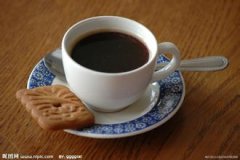Rich and balanced taste of Honduras manor boutique coffee beans grinding degree baking degree treatment method simple

Although Honduras coffee does not have very distinct characteristics, but the overall taste is rich and balanced is its biggest feature. In detail, it has moderate or light acidity, giving a distinct but not intense feeling. Sometimes with a slight floral or fruity aroma (generally different regions, different altitudes of beans have different flavor performance) slightly bitter and obvious sweet back. Honduras taste overall balanced, acid and bitter are not strong, the balance between the two is excellent. Therefore, Honduran coffee's extremely balanced characteristics make it widely used. It can be used to mix comprehensive coffee, but also can be brewed as a single product. Honduras coffee can be used to make Italian espresso. Honduras is a mountainous country in Central and North America with a population of more than 8.3 million and an area of about 112,000 square kilometers. Located in northern Central America. It is bordered by the Caribbean Sea to the north, the Gulf of Fonseca in the Pacific Ocean to the south, Nicaragua and El Salvador to the east and south, and Guatemala to the west. More than three-quarters of the territory is mountainous and plateau. Mountains extend from west to east, inland for lava plateau, multi-mountain valley, coastal plains. Tropical climate, coastal plains are tropical rain forest climate.
Honduras coffee is imported from El Salvador. Coffee production was lukewarm until the Brazilian frost of 1975. Brazil was hit hard, coffee production plummeted, while Honduras took advantage of the opportunity to "rise", coffee production soared from 500,000 bags to 1.8 million bags, and was robbed. Since then coffee production in Honduras has really developed. For coffee production, Honduras is geographically no less favorable than neighboring coffee producing countries such as Guatemala and Nicaragua. Honduras has 280,000 hectares of coffee plantations, mainly small coffee plantations, most of which are less than 3.5 hectares. These coffee plantations account for 60% of the coffee production in Honduras.
In coffee plantations, because they are grown in mountainous areas, coffee beans are picked by hand and carefully processed to produce better coffee beans. Honduras harvests 3 million bags of coffee every year, providing a variety of coffee quality to everyone, and is now one of the top ten coffee exporters in the world.
Honduras has had 139 coups since independence in 1821 and 1978, making it one of the most frequent coups in Latin America. In the 1957 general election, Ramón Villeda Morales of the Liberal Party won the presidency. In 1963, Osvaldo López Arellano, commander of the armed forces, staged a coup d'état under the auspices of the United States, overthrew Morales 'regime and was elected president in 1965. In 1971 Ramón Ernesto Cruz won the National Party election, but soon after taking office, Arellano launched another coup to power. In 1975, Juan Alberto Melga Castro, commander of the armed forces, staged a coup d'état to replace Arellano. In 1978, the commander of the armed forces, Policapo Paz Garcia, launched a coup and formed a military committee headed by him. The national emblem of Honduras was used in 1825. The national emblem was made of stone and made of huge Monsonikin.
The word tower symbolizes equality and justice, and the two square towers symbolize the independence and sovereignty of the country. The blue ocean represents Honduras 'geographical position. The blue sky and rainbow in the background reflect each other's yearning for the future. An oval white band with the words "Republic of Honduras September 15, 1821, Freedom, Sovereignty, Independence" written in yellow Spanish surrounds the pyramid, showing spiritual strength. The colored arrows at the top represent the local indigenous people, and the horns filled with roses on both sides hold up the rich natural resources. At the bottom, pines and oaks are evergreen, firmly growing strength and hope. The state summons the people to cultivate national consciousness with labor and honor. The Mayan houses symbolize Honduras, the birthplace of the glorious Mayan culture in history.
In Honduras, coffee production is divided into six regions, located in the west and south: Santa Barbara, El Paraiso, Copan, La Paz, Comayagua and Olancho, with an average planting height of more than 1100 meters. Coffee varieties are Arabica, 69% belong to HG "high coffee" grade, 12% belong to SHG "special highland coffee", 19% belong to CS. The main varieties are Typic, Bourbon, Caturra, Villa Sarch and Lempira.
Therefore, two kinds of coffee produced in Honduras are of very good quality, one is "highland coffee" grown at an altitude of 1,000 to 1,500 meters, and the other is "selected highland coffee" grown at an altitude of 1,500 to 2,000 meters, representing the highest level in Honduras. Most of them are exported to the United States and Germany.
Important Notice :
前街咖啡 FrontStreet Coffee has moved to new addredd:
FrontStreet Coffee Address: 315,Donghua East Road,GuangZhou
Tel:020 38364473
- Prev

A brief introduction to the market price of Honduran boutique coffee beans in troubled times
What is there to miss about coffee in this turbulent country? Honduran coffee does not have very distinctive characteristics. Its biggest feature is that the overall taste is rich and well-balanced. Medium or shallow acidity, giving the impression of obvious but not strong. Sometimes it has a beautiful floral or fruity aroma (generally speaking, beans produced in different regions and at different elevations have different performances)
- Next

Cultivation of high-quality coffee beans in Honduras with mixed coffee A brief introduction to the geographical location, climate and altitude
Medium or shallow acidity, giving the impression of obvious but not strong. Sometimes it has a beautiful floral or fruity aroma (generally speaking, beans produced in different regions and at different elevations have different performances). It is not at all associated with the unrest of the country. Bitterness and obvious sweetness. The overall taste of Honduran coffee is balanced, sour and bitter are not so strong, between the two
Related
- Does Rose Summer choose Blue, Green or Red? Detailed explanation of Rose Summer Coffee plots and Classification in Panamanian Jade Manor
- What is the difference between the origin, producing area, processing plant, cooperative and manor of coffee beans?
- How fine does the espresso powder fit? how to grind the espresso?
- Sca coffee roasting degree color card coffee roasting degree 8 roasting color values what do you mean?
- The practice of lattes: how to make lattes at home
- Introduction to Indonesian Fine Coffee beans-- Java Coffee producing area of Indonesian Arabica Coffee
- How much will the flavor of light and medium roasted rose summer be expressed? What baking level is rose summer suitable for?
- Introduction to the characteristics of washing, sun-drying or wet-planing coffee commonly used in Mantenin, Indonesia
- Price characteristics of Arabica Coffee Bean Starbucks introduction to Manning Coffee Bean Taste producing area Variety Manor
- What is the authentic Yega flavor? What are the flavor characteristics of the really excellent Yejasuffi coffee beans?

